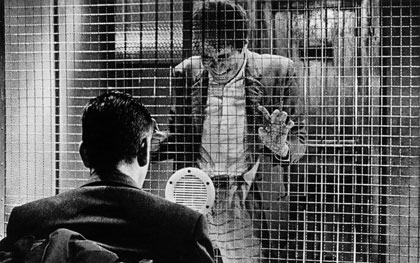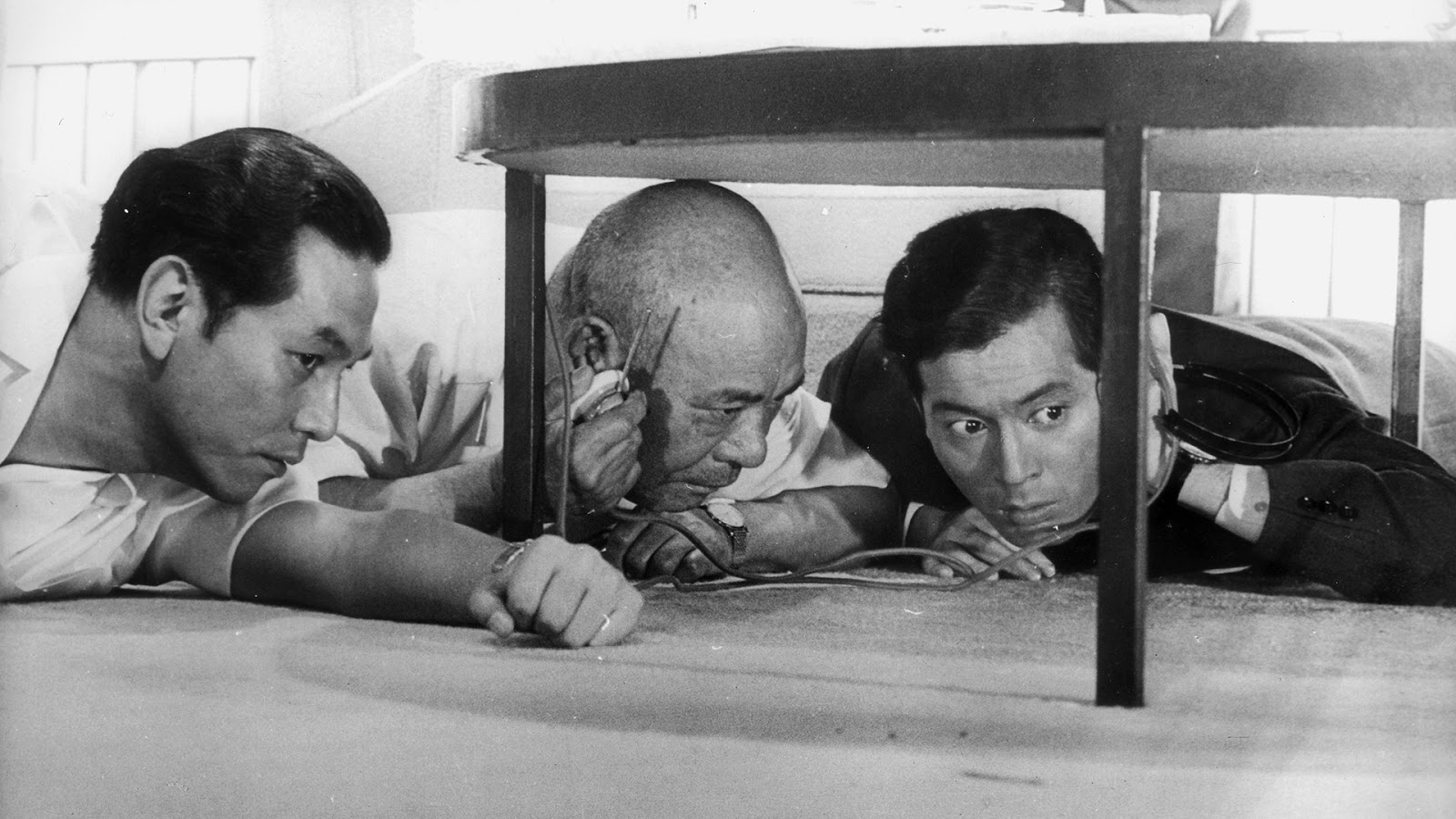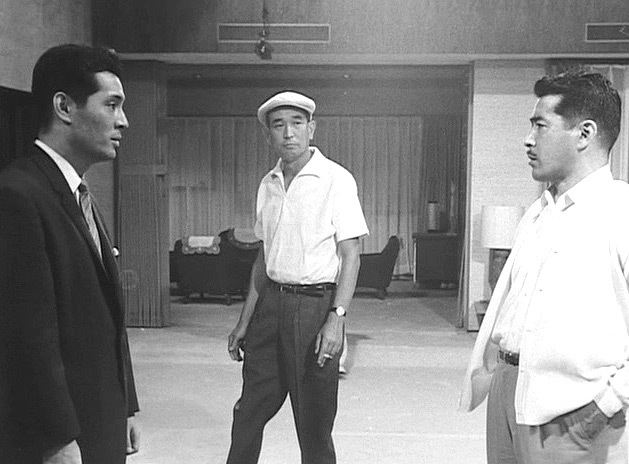4. The dark side of Japan

Kurosawa’s examination of the dark underbelly of Japan’s society is a shocking eye opener to many in the west. The country is known for tradition and civility, but few outside the country would have no clue about the heroin epidemic at the time.
Kurosawa present this in a hard core and gritty fashio,n tackling the subject in a way that filmmakers in America would only portray in the 70’s. Kurosawa was ahead his time by doing it in the early 60’s.
Also it gives High and Low a certain realism that few crime dramas can boasts at the time and Kurosawa gives the audience a unflinching look at addiction. A female drug addict suffering through withdrawal is haunting and the visual depiction of a drug over dose is brutally honest and authentic.
By showing the darker side of Japanese society, Kurosawa presents a cinematic time capsule for future generations to have a more balanced look at the past, but at the same time keeping the film relevant for today’s audience because opiate addiction remains a serious problem to this day.
5. Heaven and Hell

The Japanese tittle for High and Low is Tengoku to Jigoku, which translates to Heaven and Hell. Kurosawa plays on the theme throughout the movie, Gongo’s extravagant home stands on top of a hill (representing heaven) looking over a ghetto below.
When Gongo opens a sliding window, there’s a wide view of open sky as if his home is floating on cloud above and on the surface, the business man is an unlikely residence of heaven because he seems like any other soulless corporate figure. However, his choice to risk his wealth to save the life of a child gives him the moral high ground in the story after all wouldn’t God forsake wealth to save a life?
While down below the kidnapper lives in the ghetto (representing hell), his home is dark, cluttered, and claustrophobic. The view from his window, we can clearly see Gongo’s home sitting on top of the hill seemly inaccessible to the inhabitants of hell. Jealousy and envy pushes the Kidnapper towards evil, first kidnapping then murder.
Kurosawa also splits the movie into two parts, the first part takes place inside Gongo’s home (heaven), this is where all the pieces fall together in a desperate effort to save the life of the kidnapped child. While the second half (hell) is the police investigation where the films gets darker, while the cops are searching for their suspect, murder and drug use becomes part of the narrative.
The last scene between the business man and criminal happens when Gongo visits the kidnapper in jail prior to his execution. The kidnapper refuses to see anyone before he’s put to death accept for Gongo. This meeting plays on the heaven and hell theme one more time through the actor’s performance.
Gongo appears humbled because of his new standing in life, but also graceful almost angelic while the kidnapper comes off crazed and demonic towards the end of their conversation. Throughout the film, Kurosawa shows the two extremes throughout the film, using metaphors and motifs but always trying to point out the line between heaven and hell is a thin one.
6. Akira Kurosawa

Akira Kurosawa once said unless you have a rich reserve within, you can’t create anything. Judging by the cinematic masterpieces he created throughout his career, the reservoir of talent he possessed was unmatched.
Filmmakers were doing remakes of Kurosawa’s films way before Hollywood ran out of ideas and started doing remakes to create fresh material. His films were always universal because he focused on the human condition which translates well in any language. His camera work was fluid, creating visually stunning images for his films.
Often using a multi camera set up and utilizing long lenses, his actors performance were more natural because they had no idea which camera was capturing their performance. Kurosawa also edited his own films, the creative team that worked with him claimed he was the best editor in the world and Kurosawa’s films have a kinetic energy when it comes to the shots being assembled, because he always did cuts on movement within the frame.
While High and Low might not have as much complex camera movement as some of Kurosawa’s Samurai movies, many film critics agree it’s the director’s best and strongest effort. After the release of High and Low, it was met with both critical and commercial success, becoming the highest grossing film that year in Japan.
After the release of the film, Kurosawa and Mifune would go on to make just one more film together before a falling out between the two men occurred ending their sixteen film collaboration in the mid 60’s.
Artistically Kurosawa would also suffer somewhat after venturing out of Japan to work on a Hollywood production Tora! Tora! Tora! which became a disaster. There were so many problems with the production, Kurosawa left the film production and the several films he released afterwards were met with mixed reception both commercially and critically.
It would take nearly twenty years after the release of High and Low for Kurosawa to resurrect his career when George Lucas riding high on the success of Star Wars, which was inspired by Kurosawa’s Hidden Fortress. It helped the legendary director secure financing from 20th Century Fox to make the film Kagemusha.
Both Lucas and Francis Ford Coppola served as the executive producers on the project and when the film was released, it became an international hit, making Kurosawa a relevant filmmaker once again. With the release of his next film Ran, which has some of the greatest battle scenes to ever be capture on film, it solidified Kurosawa as one of the greatest filmmakers to ever live.
After the release of Kagemusha and Ran, a new generation of filmmakers and audiences would rediscover Kurosawa’s earlier films and since High and Low wasn’t part of the Samurai genre, many cinephiles over looked it, thinking his best films took place during feudal Japan but with a resume of so many great and influential movies to his name, the director’s best work took place during contemporary Japan and while it might be forgotten by some moviegoers, High and Low remains Kurosawa’s greatest masterpiece.
Author Bio: R. Prince is a filmmaker from Harlem, New York and the author of the book How to Roll a Blunt for Dummies.